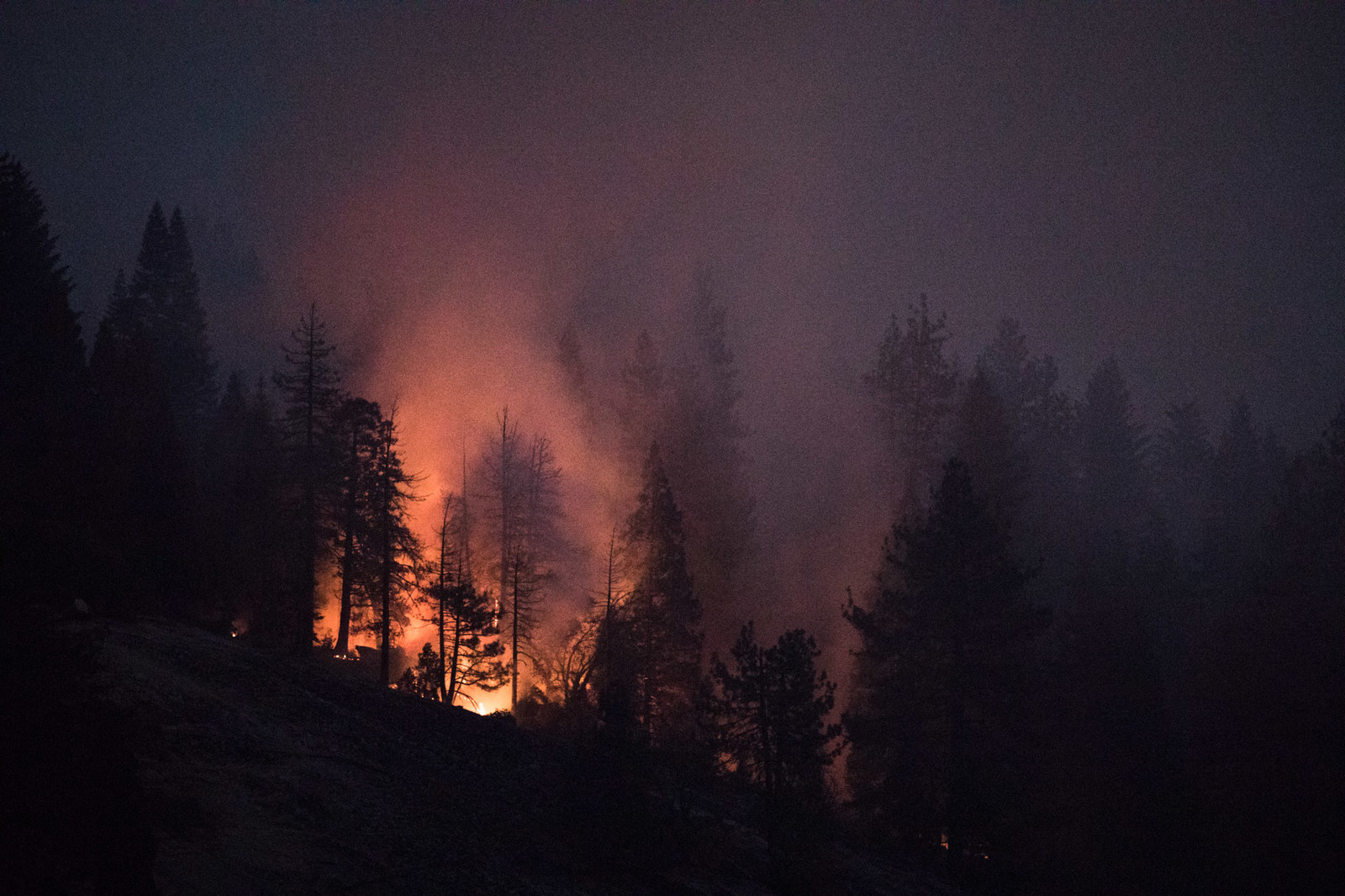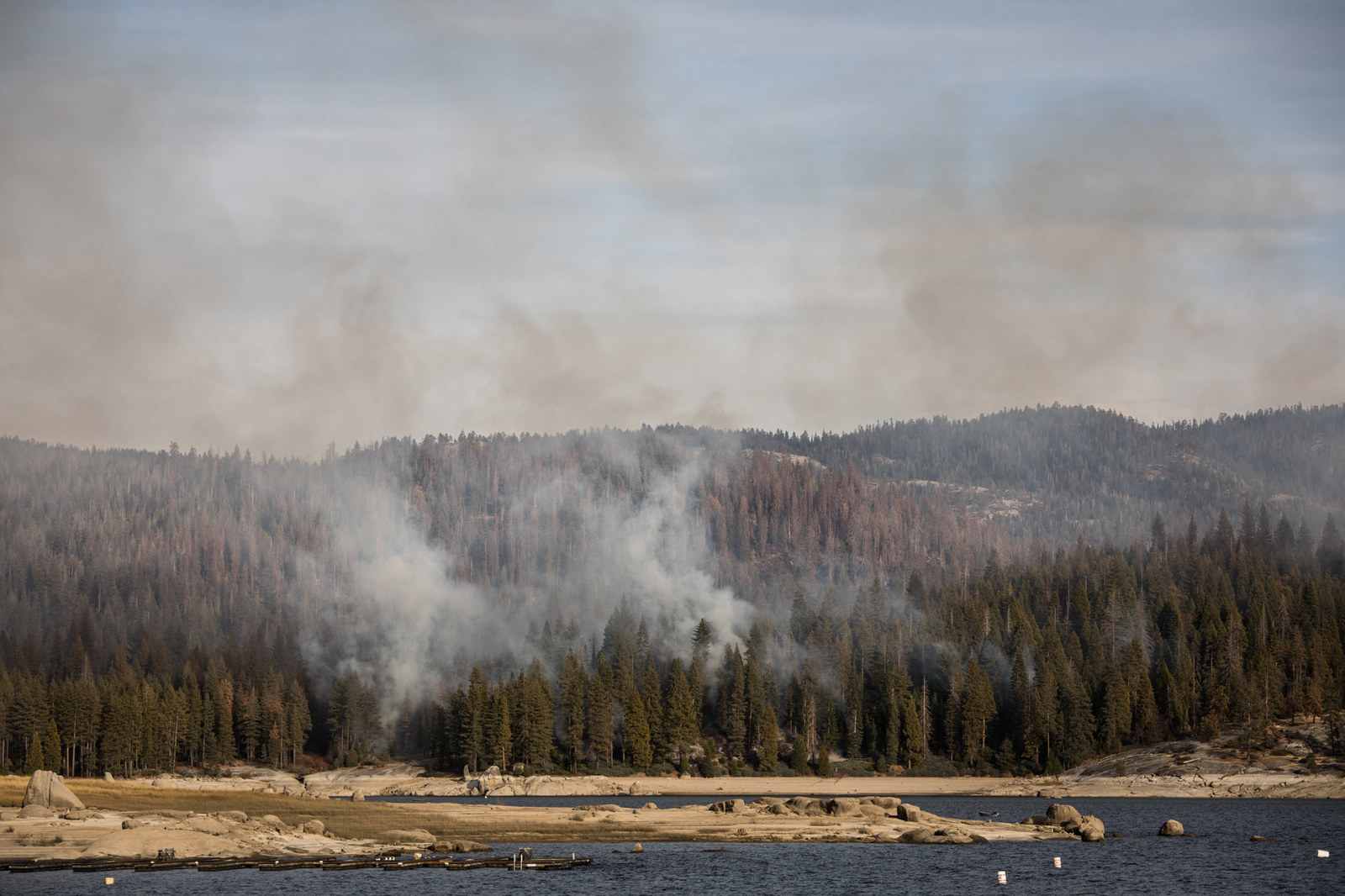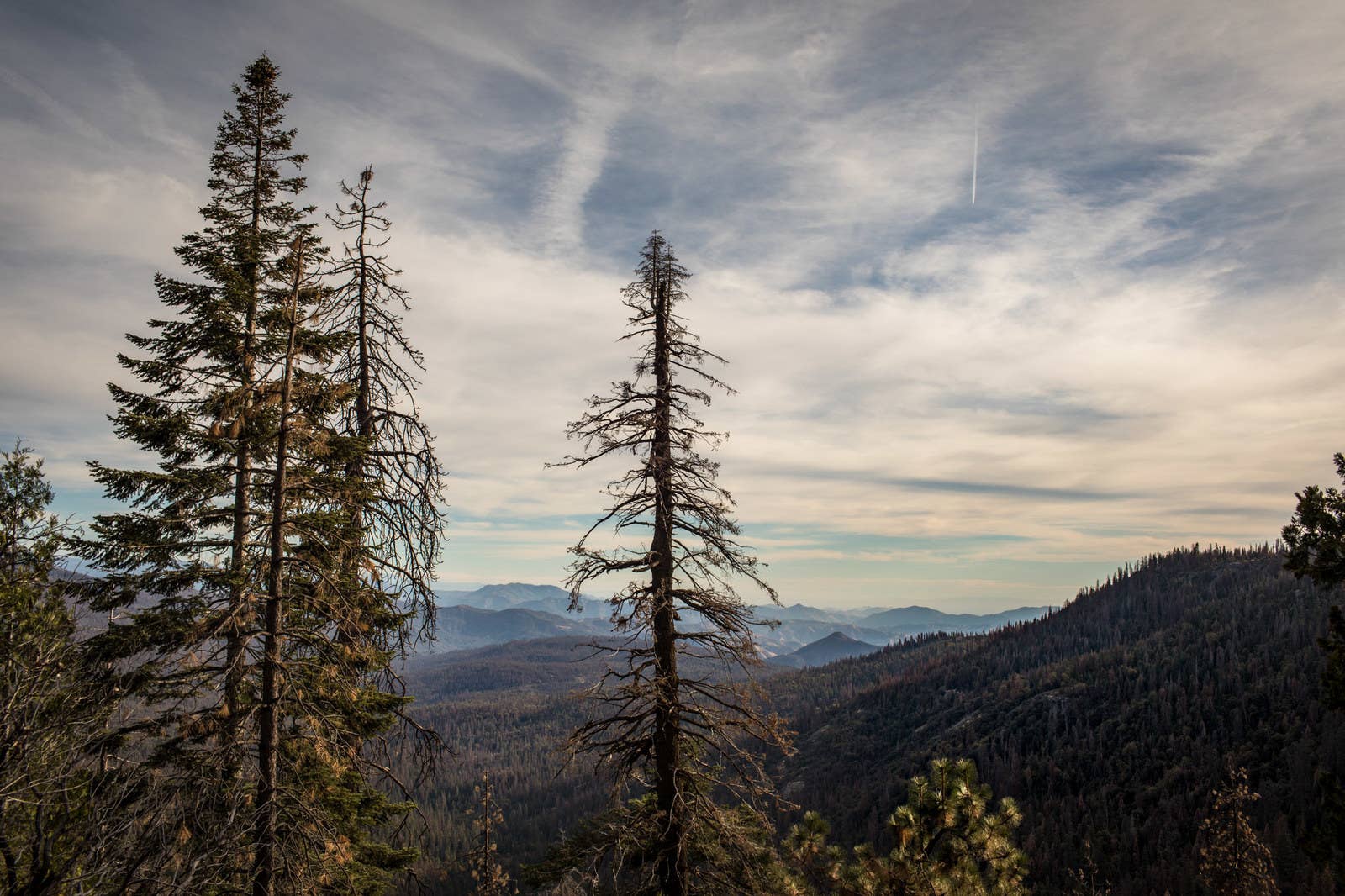
John Muir, naturalist and cofounder of the Sierra Club, wrote of the forests in the Sierra Nevada, "Going to the woods is going home." Unfortunately, since 2014 that home has seen unprecedented levels of tree mortality with as many as 129 million trees across 8.9 million acres lost. Where once stood a lush, green forest, there are now trees turning yellow and brown. The alarmingly accelerated pace of their death has been linked to the stress caused by climate change, more specifically increased temperatures, years of severe drought, and an unhealthy overgrowth due to years of fire suppression, which led to a significant spike in bark beetle infestations.
Photographer Mette Lampcov spent three days in November 2017 in California documenting the Sierra National Forest's dead trees, as well as the homeowners forced to reckon with their dying surroundings. According to the US Forest Service's 2017 Tree Mortality Aerial Detection Survey results, the Sierra National Forest has seen the largest number of tree deaths in California national forests, with nearly 32 million since 2010. The change in landscape was immediately noticeable, said Lampcov: "As you drive up a steep road heading into the Sierras, you start seeing the dead trees. It's overwhelming and hard to explain what endless views over mountains look like with a sea of brown and yellowing trees. The area is so affected by dead trees; you smell fires and hear chainsaws all day long. Everywhere you look there are dead trees."
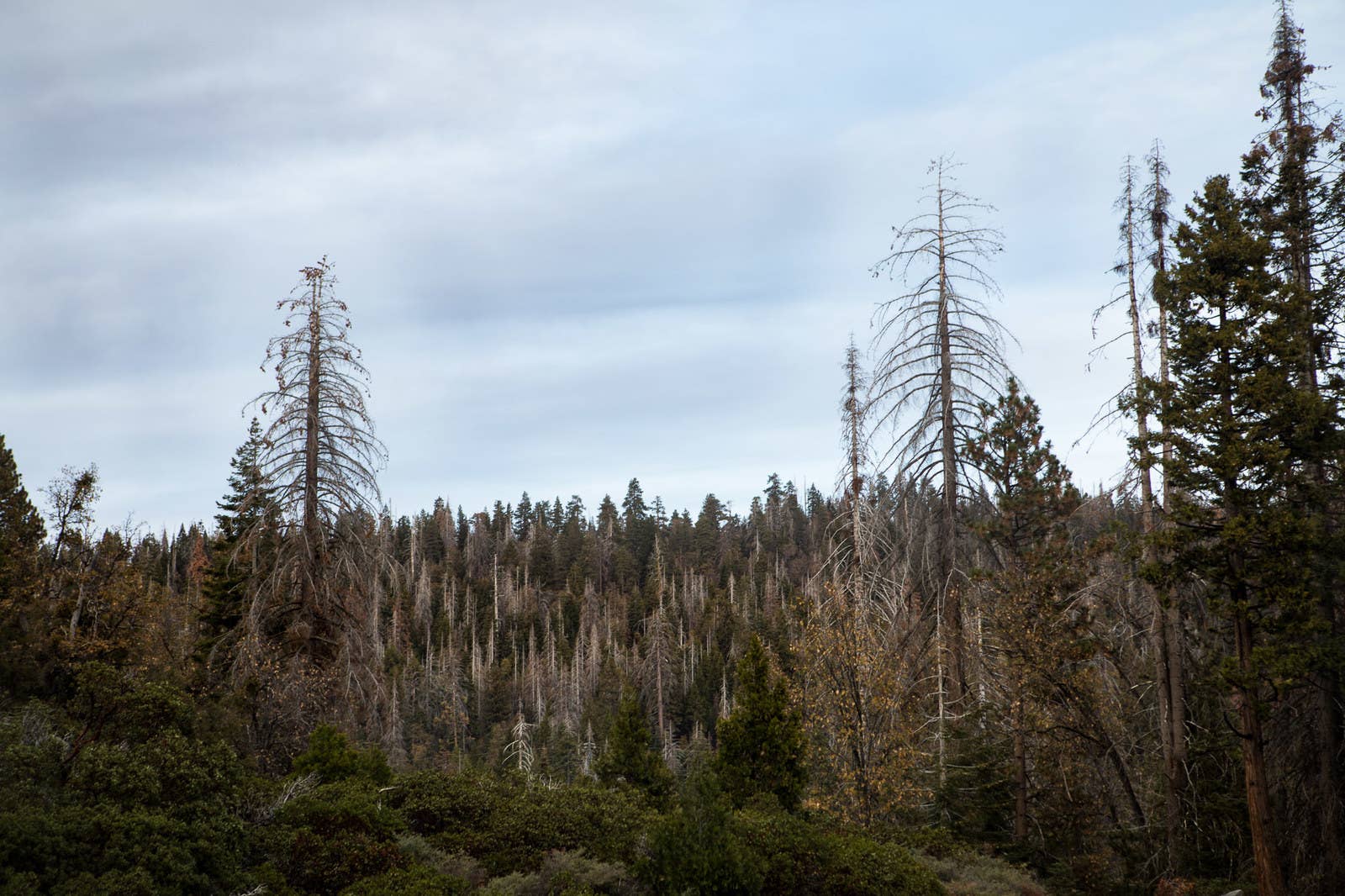
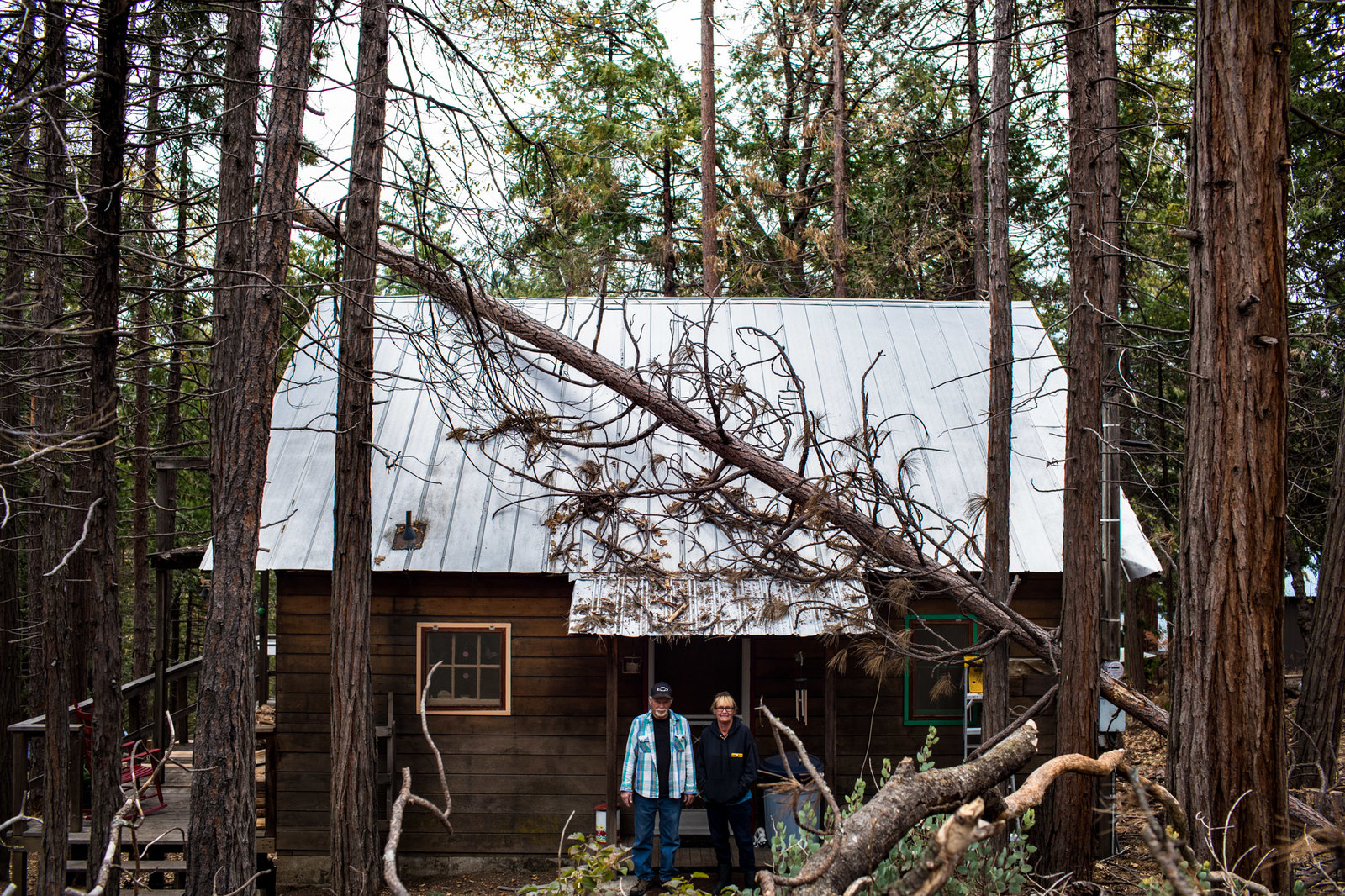
Such a devastatingly large number of dead trees come with equally dire consequences. From an environmental standpoint, there's the one-two punch of both a loss of the amount of carbon stored by the trees and an increase in greenhouse gas emissions, the displacement of wildlife as their habitats are destroyed in subsequent wildfires, and an increased risk for larger and more destructive wildfires once ignited.
California is no stranger to wildfires, but as Alex Hall, director of the Center for Climate Science at UCLA, explains, climate change has amplified wildfires' prevalence. "In Southern California, the fires are much more driven by temperature and the relative humidity of the winds," he said. "Climate change makes fires worse by increasing temperature. In addition, we have shown that relative humidity declines during the wind events that generate fire."
Adding dead trees to the equation, a study from February 2018 in the journal BioScience found "The scale of present tree mortality is so large that greater potential for 'mass fire' exists in the coming decades, driven by the amount and continuity of dry, combustible, large woody material that could produce large, severe fires." This past December, the Thomas Fire in Ventura and Santa Barbara counties became the largest in California state history.
There are also the more personal effects to consider, such as the cost to taxpayers to prevent and fight wildfires, as well as the difficulties posed to communities dealing with damage from fallen trees, denied insurance policies, the cost of tree removal, and the lack of privacy those trees used to afford.
Homeowners Franky and Sam Johnson live in Meadow Lakes, California, and have been navigating the fallout from the many dead trees on and around their property. When Lampcov visited, their home had just been hit by a fallen tree for the third time. Homeowners are encouraged to have dead trees removed, but it can be very costly. Although energy company PG&E initially removed 23 trees from the Johnsons' property free of charge to prevent damage to their power lines — something other stakeholders in the area have been doing to protect their infrastructure — the couple says there are still close to 15 trees within striking distance of their home. Each would cost $1,000 to have professionally removed.
The couple is also struggling with the loss of the landscape that brought them to the property in the first place. Franky told Lampcov, "It used to be so green you couldn't see your neighbors — now you see everyone. The sad part is a whole generation of trees are wiped out. You move to the mountains to have peace and privacy. Now there are no trees and there is no green ... it takes away from the mountains, and now it's hard getting insurance.”



Historically, naturally ignited wildfires were an important part of the Sierra ecosystem: They thinned forests to prevent the density we're currently seeing. For nearly a century, these fires have been purposely suppressed, intensifying the concentration of trees in our forests. As Steven Ostoja, director of the USDA California Climate Hub at University of California, Davis, explained, "We now know the fires are a critical process in nature and add a lot of value to the system." According to a 2017 Sierra Nevada Conservancy report, "Today many Sierra forests host 300 or 400 trees per acre where there used to be 50 to 80." With so many trees competing for water and other resources during the extreme and prolonged drought California faced between 2011 and 2017, many fell into distress, making them more susceptible to the bark beetle.
Under ordinary circumstances, bark beetles help forests maintain healthy growth and resilience by killing older and weaker trees. They begin by boring holes into the bark and creating tunnels between the trunk and the bark, where they siphon off the tree's precious resources of food and water until the tree is dead, which in warmer months can be in as little as two to four weeks.
To defend themselves against these beetles, which are about the size of a grain of rice, healthy trees produce a sap-like substance called pitch. This forces the beetles out of the tree through the creation of pitch tubes. White pitch tubes indicate the successful expulsion of the bark beetles, but given the damaging effects of climate change — such as lack of moisture in the soil and the burdens of overgrowth — healthy trees have become weakened and unable to produce enough pitch to expel the pests. Weakened trees that have lost the fight against the insects will exhibit reddish-brown pitch tubes, which indicate the infestation has taken hold — it's usually a death sentence.
"Stressed trees are suitable host material for bark beetles and their successful colonization results in more beetles and high levels of tree mortality," said Sheri Smith, the entomology program manager in the US Forest Service's Pacific Southwest region.

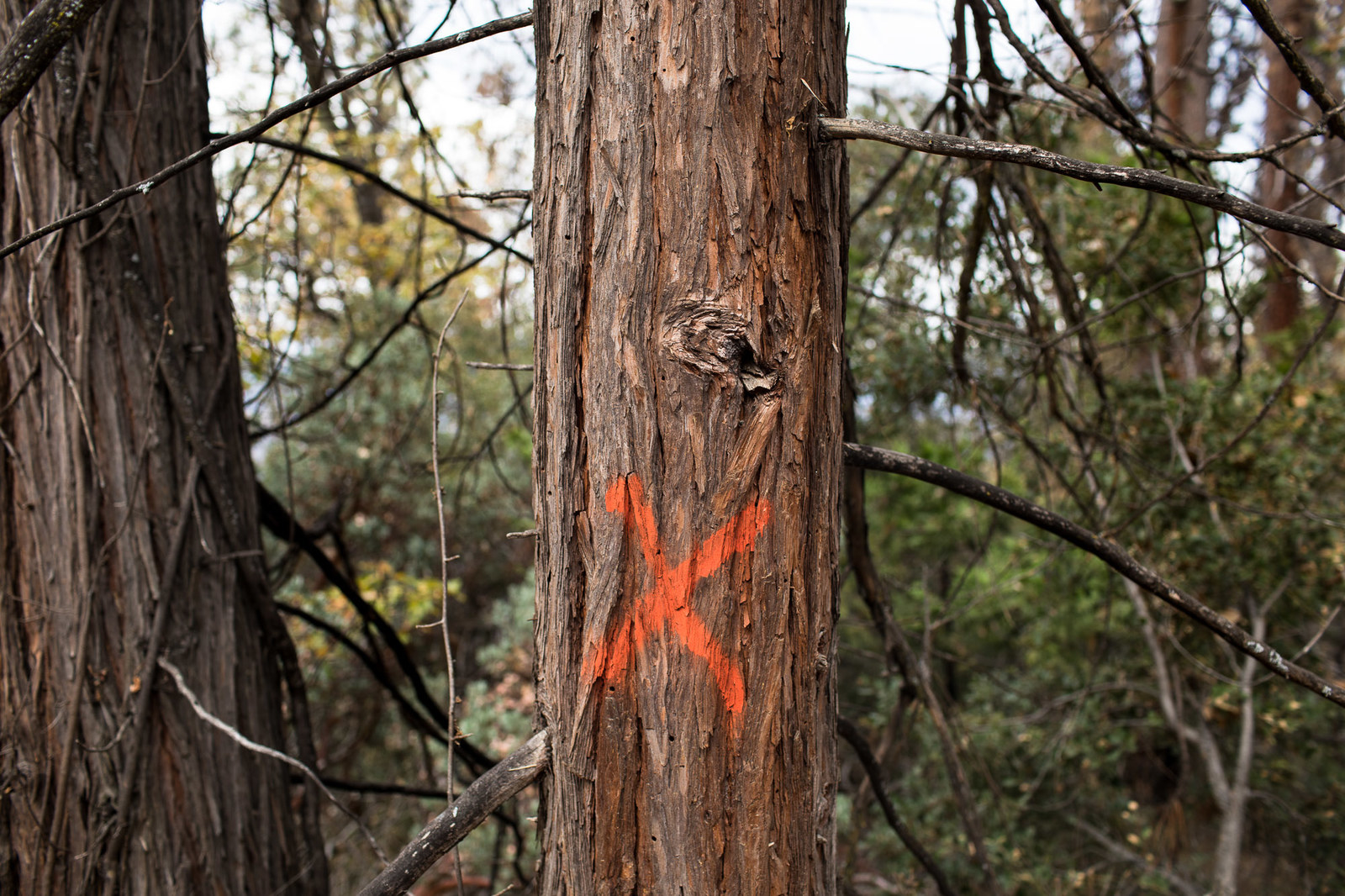
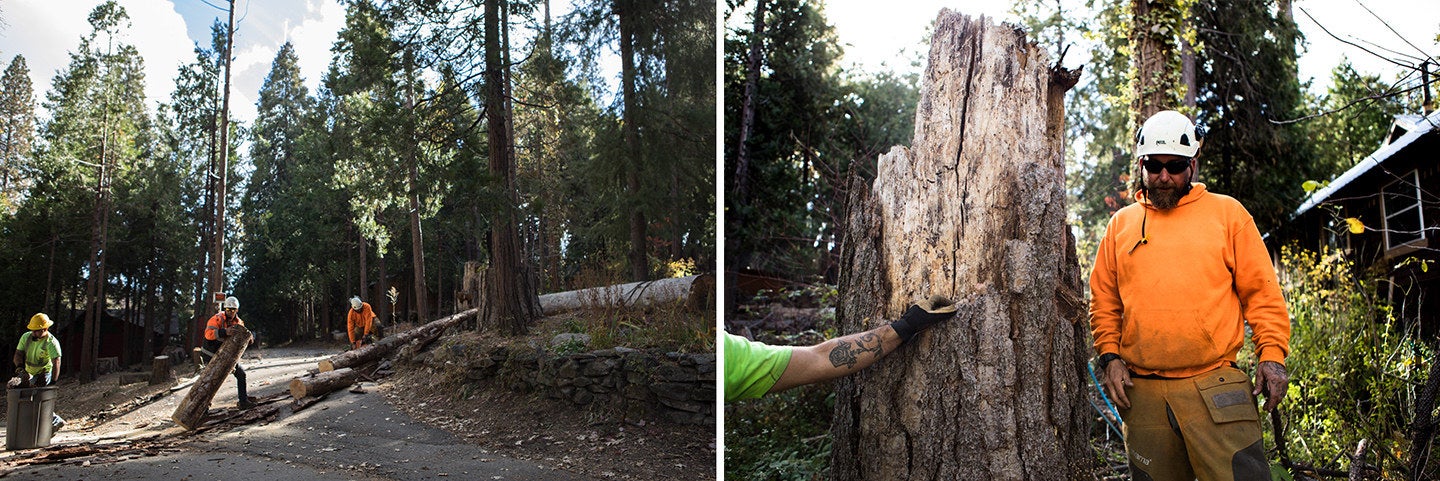
To address the dangers caused by the rapid forest devastation, the Office of Emergency Services and Cal Fire created the Tree Mortality Task Force with the aid of the governor's office. Made up of state and federal agencies, local governments, and energy companies with interests in the area, the force initially focused on the hardest-hit areas, but as the mortality continued to spread, so did their efforts. The US Forest Service has been coordinating with the task force, and says "the current focus is on reducing risks and prioritizing efforts in areas where dead and dying trees pose the greatest risk to life and property." The task force is most often found performing one of two tasks: tree felling and prescribed burns.
The risk of falling trees doesn't just plague residential communities; tourism has also been affected. In 2015, the US Forest Service was forced to close the famed Trail of 100 Giants in Sequoia National Forest — a hiking trail that includes around 125 giant sequoias, some estimated to be nearly 1,500 years old — amid concerns that dead trees along the trail were at risk of falling on hikers. Luckily the giant sequoias themselves haven't been affected.
The task force targets trees that are most likely to fall on homes and power lines, and to block roads. According to a report from 2017, the task force has removed more than 840,000 trees since 2015. Once cut down, the logs are transported to Sierra Forest Products sawmill. When the sawmill was founded 60 years ago, there were seven others servicing the national forest area, but as federal rules became more restrictive over the past few decades and other mills closed, they're now the last operating mill in the area. They've been unable to keep up with the tremendous demand.
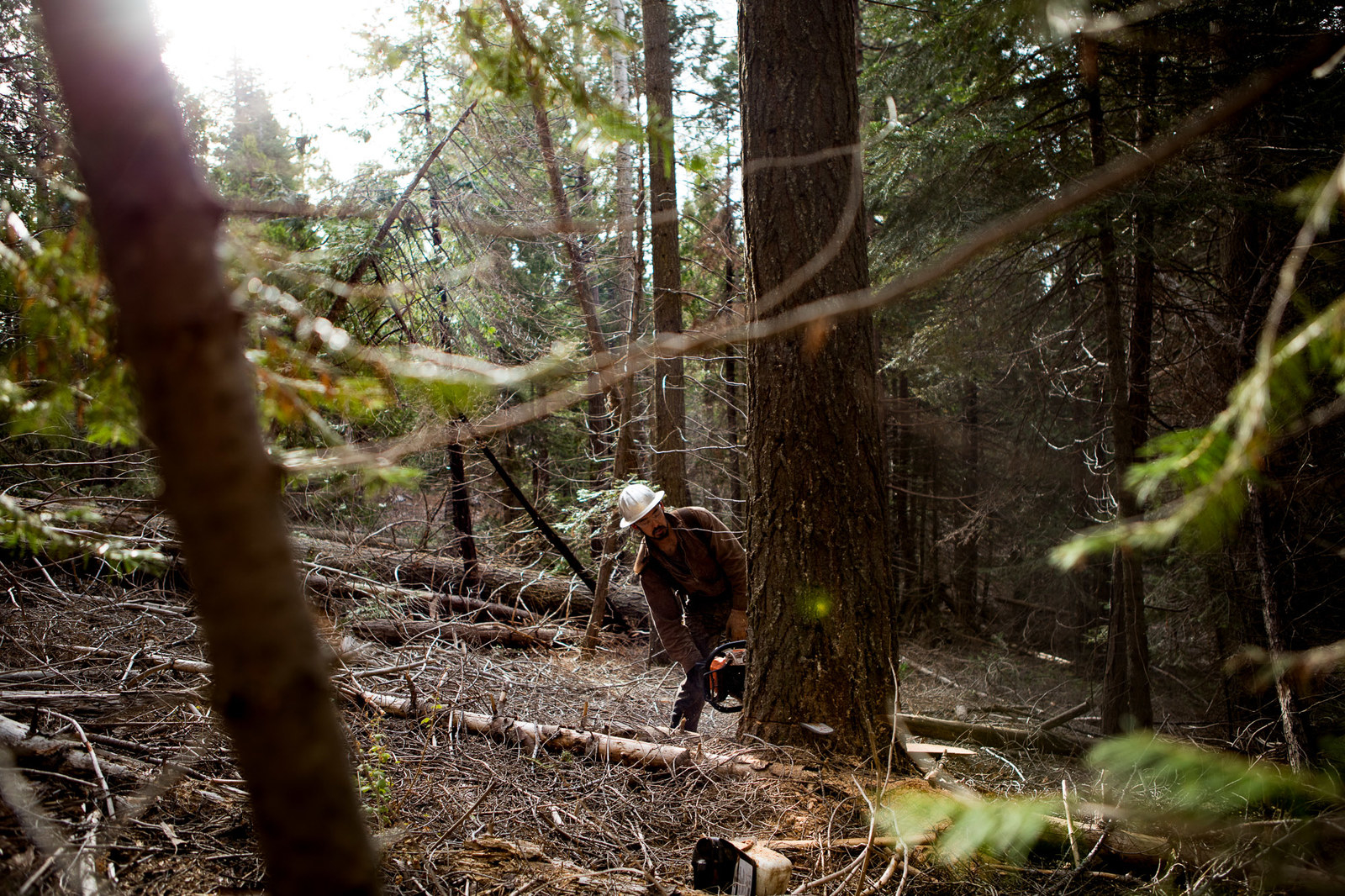


As ubiquitous as the sound of chainsaws wherever the task force is working is the smell of smoke from prescribed burns. These controlled fires are purposely lit to reduce "excessive amounts of brush, shrubs and trees," meaning healthy trees will face less competition for water and other natural resources. Utilizing computer models to predict the best conditions for initiating a prescribed burn, they are avoided when the weather is too wet, too dry, or too windy, which would give task force members less control. Although there remains a split among experts regarding the necessity and benefit of prescribed burns, the task force hopes its careful burning of dry brush and dead trees will aid forests in their regeneration and a return to a resilient and balanced ecosystem.
Even while taking into account the dropping drought levels in California due to a significant amount of rainfall in 2017, the state is by no means out of the woods. This year was off to a much warmer and dryer start, with record-setting temperatures in February and the second-driest winter on record. Until more effort and energy is put into combatting the effects of climate change, the intensity and scale of the state's wildfires will remain unavoidable. By the same logic, as long as the trees in California's dense forests remain weakened by competition for water and embattled by bark beetles, they will suffer continued mortality at levels never before seen.
Smith, who has been working for the Forest Service since 1990 and has experienced other droughts, as well as high levels of tree mortality in the state in the past, said this time is different. "However, I had never seen such high levels of Ponderosa Pine and Sugar Pine mortality as I have observed over the past several years," she said. "Sugar Pines are my favorite trees in the forests, so it was and still is extremely sad for me to see how many large majestic pines were killed during this event, and to realize how long it is going to take to have similar size trees back in those areas — it won't be during my lifetime."
